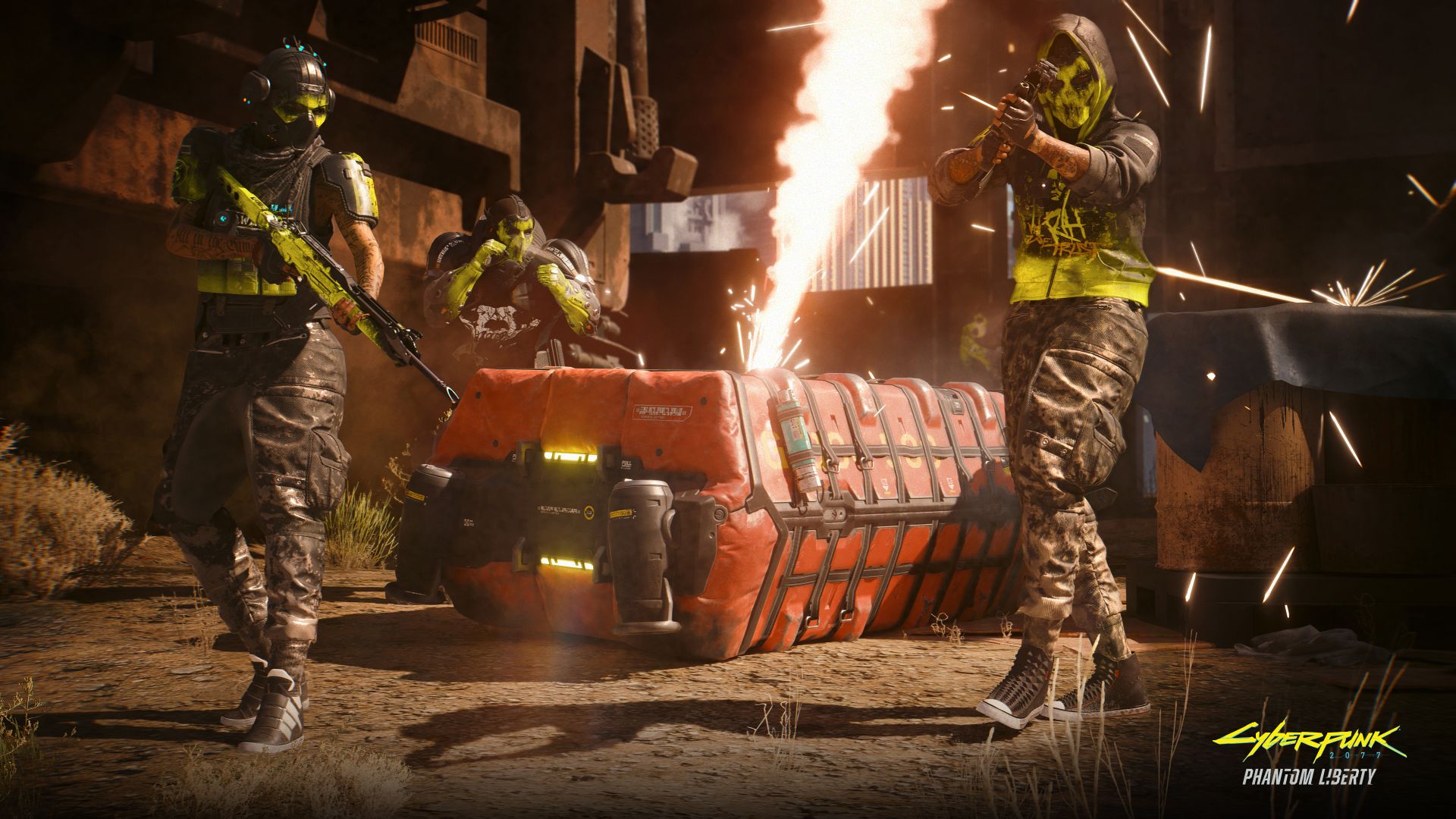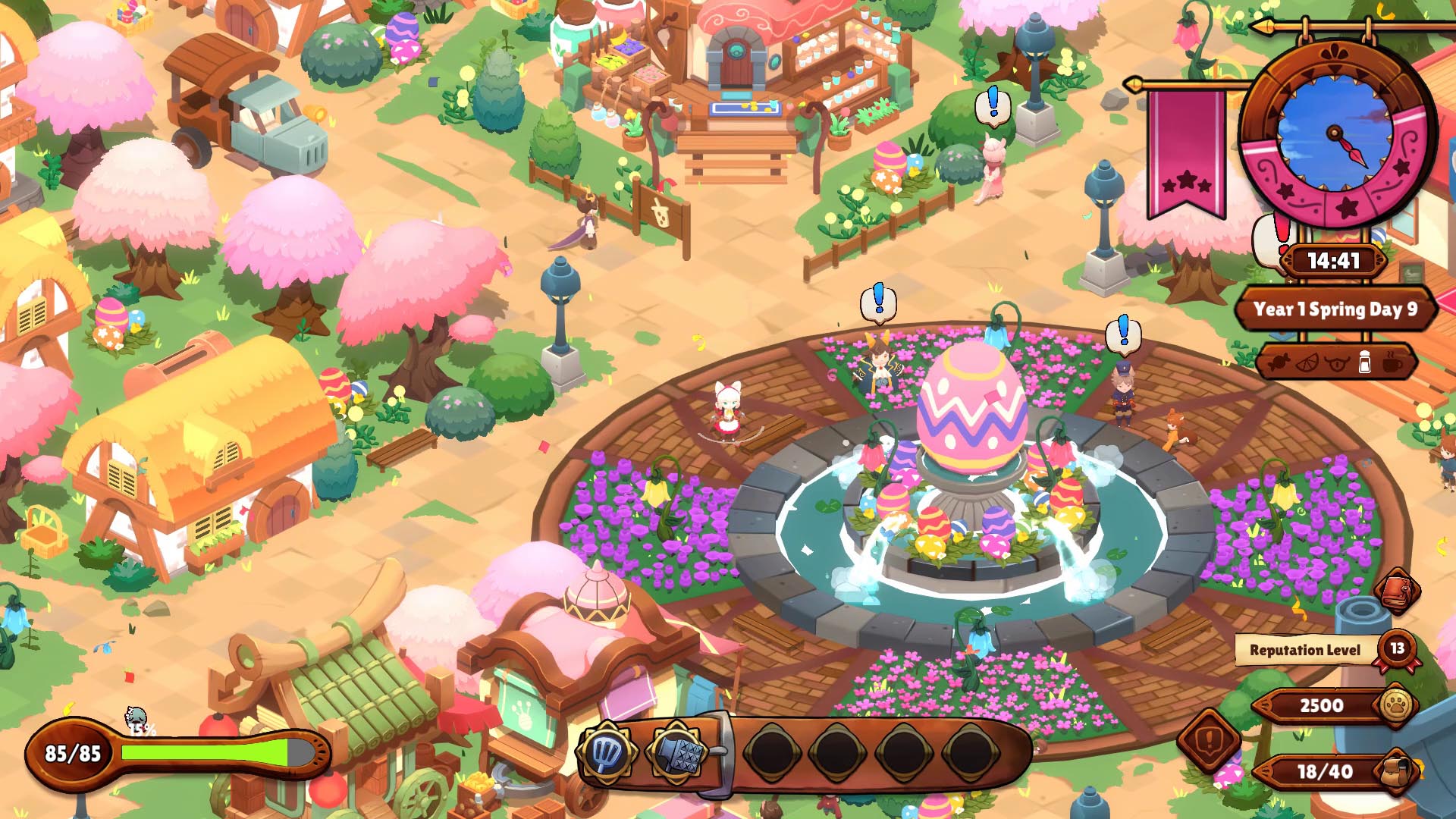RoboCop has been badly mistreated by the video game medium. Outside of Data East’s very good 1988 arcade game, studios have condemned RoboCop to appear in mostly lousy licensed video game schlock over the past 35 years.
November’s RoboCop: Rogue City may reverse the cyborg crime fighter’s fortunes, based on a meaty demo released on Steam earlier in October.
RoboCop: Rogue City is wise to borrow from the harshly satirical style of Paul Verhoeven’s 1987 original film. It opens with a news broadcast that establishes the crime-ridden state of Old Detroit, and the continued proliferation of a highly addictive designer drug called Nuke. (Rogue City is set after the events of RoboCop 2, which introduced Nuke, giving RoboCop fans another chance to ignore the existence of the third film, in which RoboCop gets a jetpack.) Developer Teyon maintains a satirical edge through the opening moments of Rogue City, and nearly pulls off saying something. Some clumsy dialogue stands in the way, but the developer is at least trying to do more than just deliver a RoboCop shooting gallery.
The first mission of RoboCop: Rogue City is pretty much that, though; Robo and his partner Anne Lewis raid a TV station that’s been taken over by a gang called the Torch Heads, led by a Keith Flint lookalike. RoboCop and Lewis clomp through the station’s corridors and stairways, and players dispatch scores of armed gutter punks using high-powered guns. There are exploding barrels to shoot at, bulky computer monitors to throw, health kits to consume, and enemies that are pleasingly dumb and easy to dispatch. This is pure RoboCop power fantasy; you’re a walking tank with mostly infinite ammo and programming that demands you mete out justice with your burst-fire hand cannon.
:no_upscale()/cdn.vox-cdn.com/uploads/chorus_asset/file/25009973/ss_e0209a1154436c29bf3ccf4bf4b30e9f9224e9fc.jpg)
Where RoboCop: Rogue City becomes much more interesting is after the TV station has been liberated of its hostage takers. RoboCop has a slight malfunction in this scene, and starts having flashbacks to his pre-cyborg days. Hallucinations involving his widowed wife and son cause him to basically shut down — a “glitch” caught on camera that benches RoboCop and fosters public suspicion that he’s incapable at best, extremely dangerous at worst.
Back at the OCP-run police station, RoboCop gets a diagnostic and is ordered to recalibrate. It’s here that Rogue City starts to reveal it’s more than just a first-person shooter: RoboCop will have to not just uphold the law (by killing a bunch of dudes), but also serve the public trust. He’s tasked with carrying a scofflaw off to the drunk tank. He interacts with citizens at the police station, some of whom are reporting crimes, some who are turning themselves in. In a bleakly funny moment, RoboCop has to inform next of kin about a death in the family, which he handles with the grace of a fax machine.
Out on the streets of Old Detroit, Rogue City opens up further. In search of the Torch Heads’ leader, RoboCop goes into investigation mode. Teyon seems to have borrowed a bit of inspiration from the Fallout games here; RoboCop can interrogate citizens, pushing them authoritatively to reveal more information or lightly threatening them with punitive measures if they don’t cooperate. NPCs can become friend or foe, depending on how your interactions go.
:no_upscale()/cdn.vox-cdn.com/uploads/chorus_asset/file/25010008/The_New_Robocop_game_is_SURPRISINGLY_good..._38_20_screenshot.jpg)
As Robo explores, he can pick up evidence and literally get drugs off the streets for XP. Occasionally, there will be a firefight, but it’s evident in the first couple hours of Rogue City that Teyon is trying to craft a more robust RoboCop experience. (I didn’t get to write any parking tickets during my time with the demo, but you can do that too.)
While the shooting itself is bloody, hyper-violent fun — clicking on bad guys either makes their heads pop or their bodies collapse into rag dolls — there also appears to be some depth to the combat. RoboCop has an unlockable skill tree that will expand his abilities. Upgrades shown in the demo include slow-motion vision, a shockwave that can stun or kill foes, a dash-punch, and psychological influence that can boost NPCs’ trust in RoboCop. It’s not quite Fallout’s SPECIAL system, but it’s pretty close, in terms of customization for Rogue City’s light role-playing aspects.
What RoboCop: Rogue City really gets right is its aesthetics. It borrows the visual language, down to one-to-one set re-creations, from RoboCop and RoboCop 2. RoboCop himself, and many of the supporting characters (e.g., Lewis, Sgt. Reed) look great, close enough to their live-action counterparts as to not be too distracting. Teyon has nailed both the look and feel of RoboCop, who lumbers just slightly faster than Peter Weller did in the character’s full armor.
The first couple hours of RoboCop: Rogue City were surprising, and it will certainly be impressive if Teyon can make the full 20-to-30-hour campaign just as compelling. The full game is out soon — Nov. 2 on PlayStation 5, Windows PC, and Xbox Series X — so there won’t be long to wait.








